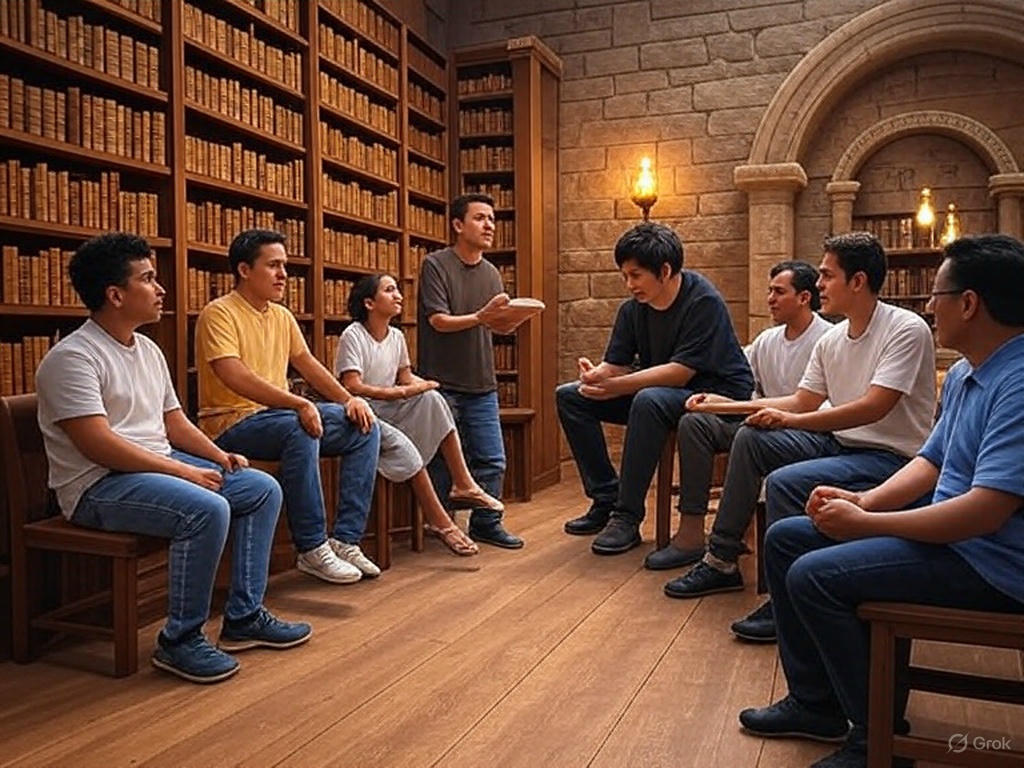Can the Bible be trusted as a reliable source of truth?
Many people today wonder if the Bible is anything more than an ancient religious book—useful for tradition, maybe, but not necessarily trustworthy. In this series, we’ll take an honest, step-by-step look at that question: Can the Bible be trusted as a reliable source of truth? Whether you’re skeptical, curious, or just looking for solid answers, you’re invited to examine the evidence with fresh eyes. This first post lays the foundation for that journey.
We invite you to dive into an incredible adventure, exploring the most controversial and bestselling book of all time: the Bible. Within its pages lie profound answers to life’s biggest questions:
- Where did the universe come from?
- How did mankind begin?
- Why do good and evil exist in the world?
As honest skeptics, we must first ask: How can we trust the Bible? This is the million-dollar question, and it’s time to roll up our sleeves and investigate. Are you ready?
Where Do We Begin?
To evaluate the Bible’s trustworthiness, we need criteria and tools. Countless scholars have devoted their lives to this pursuit, and while we can’t cover everything in one blog post, we’ll provide a solid starting point for your journey. Here are some key questions to guide your investigation:
- Is the Bible textually reliable?
- Can it be historically corroborated?
- Has it accurately predicted the future?
- Written by ~40 authors over 1,500 years, is it consistent with itself?
- Does it accurately describe the real world?
- What impact does it have on those who believe its message?
- Add your questions in the comments below!
Let’s start with the first question: textual reliability.
Is the Bible Textually Reliable?
The Bible’s age, and the absence of original copies, make this a fascinating challenge. Modern Bibles are based on ancient manuscripts written in Hebrew, Greek, and Aramaic, divided into two sections:
Old Testament: Written ~1200 BCE to 200 BCE.New Testament: Written ~50 CE to 100 CE.
Like other ancient texts, the Bible faces the hurdle of determining its original content. For context, let’s compare it to some well-known works:
- Homer’s Iliad: ~1,800 manuscripts, earliest copies 400 years after composition, with notable variants—yet considered reliable.
- Plato’s Dialogues: ~20 manuscripts, earliest copies 1,200 years later—yet trusted.
- Tacitus’ Annals: ~30 manuscripts, 1,000-year gap—yet authoritative.
So, how does the Bible measure up? Let’s break it down.
- Bible Old Testament:
- ~11,000 ancient manuscripts. The oldest date to about 200 years after its completion—an oversimplification, since it was written over centuries. This wealth of evidence offers a strong foundation for analysis.
- Bible New Testament:
- ~5,800 Greek manuscripts. The oldest complete copies are ~300 years after authorship, but fragments exist from as early as 50–100 years after the originals. This proximity to the source is remarkable for ancient texts.
Textual Criticism: Piecing It Together
For all ancient works—whether the Iliad or the Bible—scholars use textual criticism to reconstruct the original text from available manuscripts. This academic discipline examines variants (differences between copies) to determine the most likely original wording, producing a critical text. These critical editions form the basis for modern Bible translations.
The Translation Challenge
Translating the Bible from Hebrew, Greek, and Aramaic into modern languages is a significant undertaking. No single version fully captures the original nuances. For example, the Hebrew word chesed might be rendered as “mercy” or “lovingkindness,” subtly shifting the meaning. To address this:
- Modern translations rely on critical texts.
- Tools like interlinear Bibles and concordances (e.g., Strong’s) let readers explore the original language.
- Variants are often flagged (e.g., the NIV notes Mark 16:9–20 absence in early manuscripts).
A global community of scholars ensures this process is transparent, with ongoing critique refining both critical texts and translations.
Why Does this Matter?
Textual reliability is a cornerstone of the Bible’s trustworthiness. With thousands of manuscripts and fragments dating close to the originals, the Bible’s evidence surpasses that of other ancient texts. Yes, challenges like variants and translation nuances exist, but the scholarly rigor applied ensures modern Bibles are highly faithful to their ancient roots.
➡️Your Journey Continues
This is just the beginning. The Bible’s trustworthiness invites endless exploration. Ask questions, explore using various resources, and join the conversation in the comments below. What do you think—can we trust this ancient book? Your adventure has just begun!
Please join us on our next blog post—Is the Bible Trustworthy? — Part 2, where we will explore the question: Can the Bible be historically corroborated?
Explore Textual reliability
- Manuscript Access:
- Textual Criticism:
- Online Tools:
- Scholarly Work:








Leave a Reply
You must be logged in to post a comment.